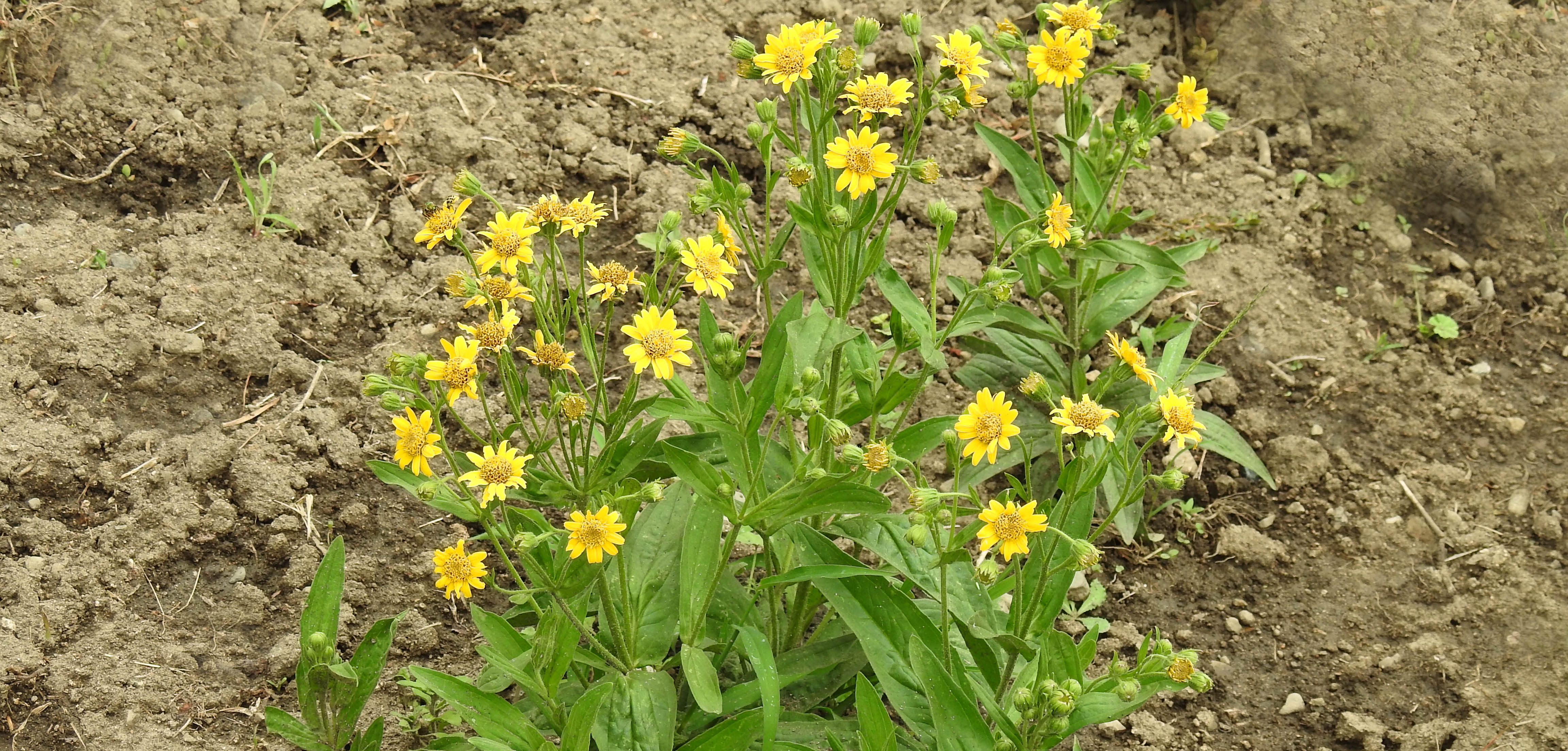
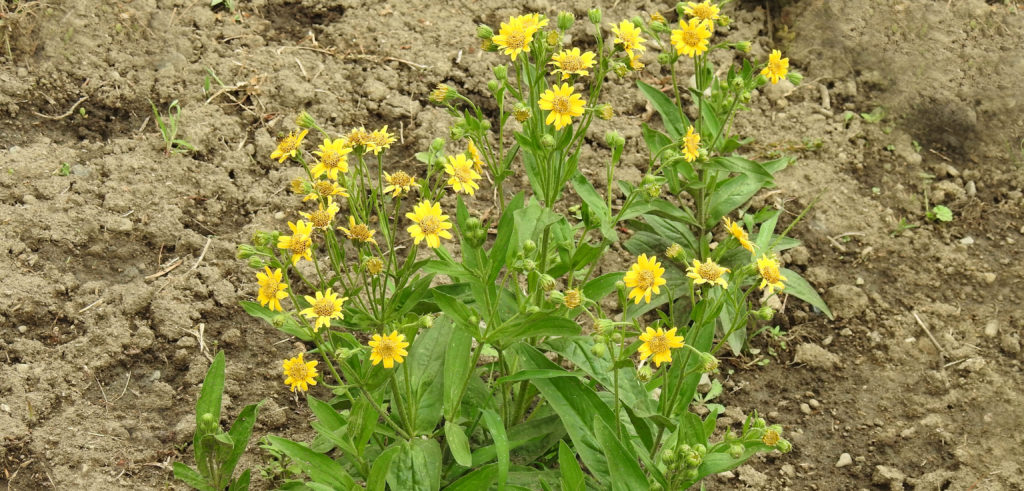
Arnica chamissonis (Meadow Arnica)
Arnica montana (Mountain Arnica), the endemic European species, is considered official. However, other species of Arnica (there are 28 in North America) are used by local herbalists, and appear to be medicinally interchangeable with the official species. Arnica chamissonis (Meadow Arnica) enjoys a wide distribution in North America and Europe, and is listed in the German Commission E Monograph as a viable substitute for A. montana in herbal medicine. Finding substitutes for the official species is a worthy goal, since populations of A. montana are declining over much of its range. Collection of flowers for medicinal purposes is illegal in Fr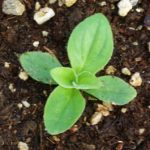 ance. The plant is classed as “vulnerable” in Bosnia-Herzegovina, Croatia, Germany, Lithuania and Slovenia. A. montana is variously protected in Czech Rupublic, France, Italy, and the Ukraine. The plant is listed as “critically endangered” in Luxembourg, “threatened” in Sweden, and “extinct” in Hungary.
ance. The plant is classed as “vulnerable” in Bosnia-Herzegovina, Croatia, Germany, Lithuania and Slovenia. A. montana is variously protected in Czech Rupublic, France, Italy, and the Ukraine. The plant is listed as “critically endangered” in Luxembourg, “threatened” in Sweden, and “extinct” in Hungary.
Collection of flowers and roots for medicinal purposes, combined with encroaching agriculture and urbanization has contributed to depopulation of the wild stands, creating shortages of the herb in commerce. Under the circumstances, it makes sense to grow Arnica. Those living at altitude will do well to concentrate on the A. montana, which makes large flowers that are easy to pick and make lots of medicine. Those living at lower altitudes might have better luck with A. chamissonis, which is a bit easier to grow. Given a suitable soil and sun exposure, this plant will thrive even at sea level.
Arnica seeds respond well to standard flower seed propagation methods. Prepare a light seeding mix that is free of lime and contains sand, forest loam and peat moss (or coir). Press the seeds into the surface of the soil or barely cover and tamp, then keep the flat warm, in the light, and evenly moist until germination, which occurs in 1 to 3 weeks. The seedlings will be quite small and slow growing at first. Once they are large enough to handle, individuate into pots and tend them for up to a year before transplanting out to the garden.
Once a good patch is established, it is fairly easy to produce more plants by means of division. Dig a rhizome, pot it up, and aerial parts will soon appear. Arnica enjoys a full sun exposure and loose, moist to mesic, acidic soils. The plant is intolerant of lime. Because it is rhizomatous (reproducing by way of underground creepers), it quickly populates a raised bed with a dense, monotypic stand. We have found that amending the native soil with compost, coir, peat, and sand, making a very loose mix that can easily be penetrated by the runners, helps promote the spread of Arnica and will result in a good yield of medicinal flowers in the fall of the first year, in the summer of the second year and for years thereafter.
Harvest the flowers in early flowering stage and dry on screens in a warm, dark and well ventilated place. Dry until crispy.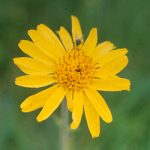 It is a good idea to use the flowers soon after drying, as they tend to get buggy in storage. Arnica is apomictic, meaning that seed formation is initiated asexually by spontaneous division of the gamete prior to the blossoming phase. The plant does not require pollination in order to make viable seed, and every seed will produce a plant identical to the mother plant. For the purpose of seed saving, this means that there is no need to collect seed from a minimum number of individuals, and there is no concern about hybridization with other species–the seeds you harvest will remain true and strong whether harvested from one seed head or a thousand. So feel free to grow your Arnica and save your own seed–nature needs your help!
It is a good idea to use the flowers soon after drying, as they tend to get buggy in storage. Arnica is apomictic, meaning that seed formation is initiated asexually by spontaneous division of the gamete prior to the blossoming phase. The plant does not require pollination in order to make viable seed, and every seed will produce a plant identical to the mother plant. For the purpose of seed saving, this means that there is no need to collect seed from a minimum number of individuals, and there is no concern about hybridization with other species–the seeds you harvest will remain true and strong whether harvested from one seed head or a thousand. So feel free to grow your Arnica and save your own seed–nature needs your help!

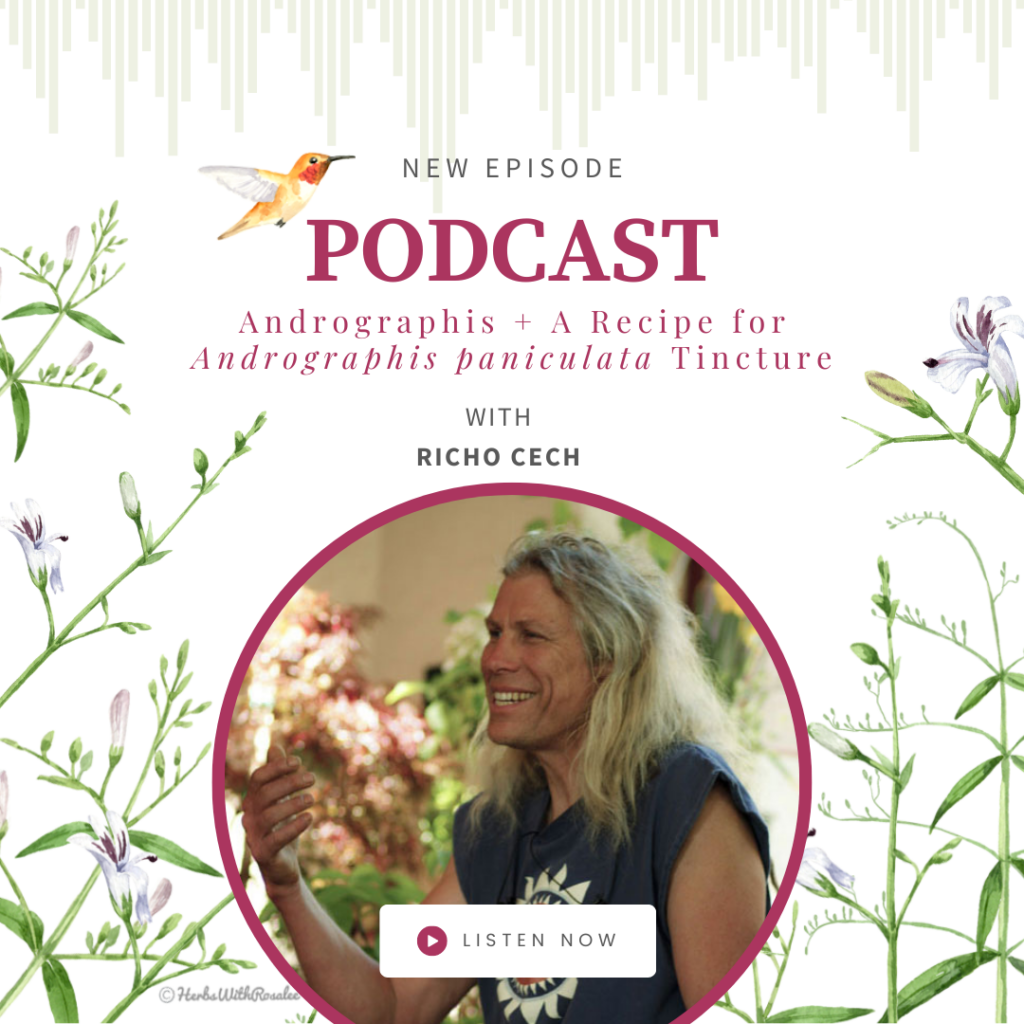
Hi Richie
Thanks for all you do! Few questions
I started Arnica in February and my plants are beautiful, about3-4” tall.
I’m worried about it spreading. I have a pretty open garden
Had a bout with aster yellows in my echinacea a few years ago and dug up one bed. Not sure how close I can plant echinacea and arnica together
Secondly, my garden gets full sun from 10a.m.-5. Should I choose another location and can I plant them this first year?
Thank you so much
Paula
hi, thanks for writing! I’ve never seen aster yellows on arnica and don’t really see any reason to worry about the plant spreading or about growing it close to echinacea. If it spreads, you’re very lucky. It won’t cross with echinacea and i don’t think it’ll pick up aster yellows from echinacea thats growing or that had the disease and was destroyed some time ago. basically sounds like you’ve got a good start on a good thing. richo
Thank you.
I love your company and have always had a high germination rate on all seeds!
Two more questions
In your blog on arnica you say to wait a year before transplanting in garden. If this is correct, what size pot per plant and will they be fine under grow lights during winter months?
Secondly, my garden gets full sun 8-9 hrs. Will they need to be shaded.
Thank you again
hi paula, the advice to wait a year applies to the slower-growing Arnica montana. This plant should be given full sun at altitude and part shade at lower altitudes/warmer zones. They go dormant in the winter, it does no good to have them under lights at that time. I would work them up to gallon pots before transplanting out. We have Arnica montana doing great outdoors in a zone 8 at 1600 feet. richo
Are the potted plants brought in first winter or ate pots left outside? Zone 4/5
Hello Heiderose, Potting up arnica is usually an intermediary from seedling stage to a plant that will survive transplant into the rigors of the out-of-doors. Most plants want to be released from pot bondage and do not achieve their full potential until planted to the freedom of garden or field. If it is too cold for arnica, which is mighty cold, the plants can be brought into the greenhouse or otherwise protected through the winter. richo
So the whole flower including the green part?
Hello Stephanie, Yes, you have that right. r
Hi, I recently planted a small starter and It’s not doing horrible but, it’s also not very happy, some of the ends of the leaves are browning. Any advice, on fertilizer, soil, watering ect?
hi josie, they can stay small and unhealthy looking for some time and then kick in, usually in the second year. Unless at high elevation, keep in the moist shade and mulch with peat moss. Richo
I have a bed of Arnica chamissonis that is three years old. The rhizomes are so matted that it seems I need to till up the bed to allow the rhizomes to get a fresh start in loose soil. Does that sound like a good plan? I have taken starts from it and have 2 other beds that are flourishing now. By the way, these thousands of plants came from one plant I purchased from you years ago! Thank you for so thoughtfully sharing your knowledge and passion for these plants.
Hi Jennifer, You’re already doing so well, I’m not convinced that my advice is necessary. I do think that tillage will damage a lot of the rhizomes, though. If you’re ok with that, then proceed! You might consider digging the bed, shaking the roots free of dirt, putting the bed to rest with mulch or covercrop, and replanting the roots to another bed. Sometimes its the healthiest decision to rotate perennials. Another option would be a top-dress of organic compost to the old bed, which may give it the resources it needs to regrow healthily next year. you truly have lots of options. richo
When I dry my Arnica it puffs up. Is it still potent enough to infuse into oil this way. If not how do I dry it to keep it from puffing? Thanks so much, Jana
Hello Jana,
This is because the arnica is particularly precocious to seed. Therefore it is important to pick the flowers in early maturity. Also, when the herb puffs up like that, it contains the immature seed, the pappus, and also the oil-filled bract and the petals, recurved back and dried, so actually all the active parts are still in there. Therefore you can grind it and use it for making the infused oil. If making the tincture, use it fresh, which will be a good workaround for your issue. Richo
One more question: you said it’s never ‘too late’ to plant Arnica seeds; but can it be too early? I got some seeds from JLHudson, and it says to keep the flats warm. I have no bottom heat; should I wait til Feb. or March? It is Jan. now. Thanks mucho. Jana Mariposa
Jana,
The plant likes to have a cool root system, that is why they need shade when in pots. Usually these germinate better in cool conditions (50 t0 70 degrees F). I haven’t planted mine yet but soon will. Check this very blog for a different thread “advanced seed planting tips” which gives my opinion on bottom heat. Richo
Hi, this has been an enjoyable read! I have a few Arnica chamissonis in pots, which I have kept in part shade as they didn’t seem to like being in the sun. I’d like to set some of them ‘free’………..wonder if the gophers will ravage them? Also when is the optimal time to divide the rhizomes; they have definitely grown and filled the pots……….thanks! Jana Mariposa
hi jana, divide rhizomes in the spring. The plant likes a monocrop bedding situation and is thin enough of rhizome to be relatively gopher-proof. richo
Is it too late for me to seed for this year? I misplaced the seed packet earlier this year! I’m in western Washington and can keep them sheltered overwinter in pots if need be.
Hi Donna, It is never too late to plants seeds of herbaceous perennials. Richo
Hi Richo,
Would you recommend growing Arnica chamissonis in a raised bed or in the ground? I’m in Northern CA. Thanks!
It does very well in the loose soils of a raised bed, where the creeping rhizomes can really find new ground.
Hi Richo
Do you think I could grow Arnica in Ecuador? I’m at about 5500 feet above sea level. I have buddies who live higher and are cooler and wetter as well. Thanks
Hello Susan,
Meadow Arnica (A. chamissonis) acts like a typical perennial asteracea and will grow anywhere where standard garden conditions can be supplied. It is pretty easy. Arbuca montana is pretty touchy, I’d try the chamissonis. BTW, neither of these plants likes lime, it works best to propagate in lime-free soil.
Richo
Great article – thanks! I collected some arnica but didn’t have enough oil on hand to do multiple batches of an oil infusion, so some of the arnica has gone to seed. Is it still medicinally beneficial to use the -gone to seed- flowers for a salve? Thanks for your help!
Hi Lara, Not really. Much of the antiinflammatory effect of arnica may be attributed to the flavonoids in the flowers, so if the flowers are gone, so is much of the antiinflammatory effect.
Richo
Can you use the leaves for medicinal use or just the flowers? I started some plants this summer and they didn’t grow much and the leaves started looking stripped with holes. Bugs? I live in Northern CA and it’s been horrible hot thr last few summers and I left it in the shade as a lot of my herbs couldn’t handle over 90 degree heat every day. So
Can u use the leaves medicinally or just the flowers? I left it in the shade as our summers here in Northern CA(Grass Valley)have fried a lot of my herbs and other plants in pots. I have it in a pot. So should it grow better even in very hot summers in the sun?
Hi Soma, Thank you for contacting. I can visualize this pretty well because I’ve seen burned out arnica before. The entire plant is active, and so if you have enough leaf to tincture fresh or dry it would probably be effective. I don’t think it would be as good as a tincture of the flowers, though. Regarding the horticultural part of your comment, Arnica will take sun but doesn’t want a hot root system (roots in a pot in the sun). It does well in a moist garden setting, or in a moist meadow, where the roots are cooled by mulch or grasses. Then, they are happy, and will spread luxuriously. At that point, you can make your medicine from the flowers, which will be superior.
Can the flowers be soaked in witch hazel or is more medicinal in oil. I have lots of oil that I have made with my seeds I harvested from you but was thinking of other uses for it?
Hello Saffron,
Arnica is effective for external use whether made into the infused oil or the tincture. If you want to make the infused oil, you can simply opt for olive oil. Check “making plant medicine” for the procedure. I do think the idea of using witch hazel extract to macerate and tincture dried arnica flowers is a cool idea. Only problem is witch hazel extract contains only 14% alcohol and dried arnica flowers extract best with 50% alcohol. I suppose you could make a proper arnica tincture and then drop it into witch hazel extract before applying. Richo
This spring I planted my first arnica plants and they are doing great! Is it ok to begin harvesting the flowers, or shall I let them go and reseed for a successful 2019?
These make good flowers in the first year, I would go for it.
Hi Richo, just reading the comments you left for Leeanna. Is it better to use the flower fresh and soak them directly in oil ( like with St. John’s wort). I’m picking the flowers as soon as they appear and drying them, but they all go to seed in the drying process. Will these dried flowers still make a potent oil? Much Thanx, helena
The infused oil made from the dried arnica flowers is the best approach, but you can use fresh flowers if you want to. Make sure to decant after settling to remove any water from the oil. Generally speaking drying the botanical out first helps assure efficient extraction and higher potency. The dried petals are still inside the dried herb and the seeds are also high in the sesquiterpene constituents.
That’s exactly why I asked about it – and from what I’m understanding from Richo’s response, we can let them go to seed as they are still considered medicinal and with the medicinal components in there. Nevertheless, I’m going to try both ways and see what gives what results. Hope that helps!
Richo, thank you! I will collect away then! I did see someone was putting fresh tight in oil – I may experiment in this way as well with a small batch to see if I can aviod rancidity. Happy summer 🙂
Hi Richo- thanks to you all for all the amazing work you do! Just a quick question: I’m finally growing Arnica chamissonis in my little garden for personal medicine use and have noticed the flower heads go to seed even once dried even if picked early. Am I picking them too late still, is there a magic time to pick them for medicinal use? Maybe it doesn’t matter? Planning on linaments and oils with them. Thanks so much!
Hi Leeanna,
Thanks to you for contributing to the continuance of herbal medicine. Yes, the flowers will tend to fluff out once set on the drying screen and this is not a problem, arnica flowers to be used in oils and tinctures generally do show some fluff. The flavonoid-rich petals are still in there, though. Pick in early flower and pick often–this will minimize the pappus.
Richo
Hi there, I read on another site (https://www.gardenershq.com/arnica-montana-mountain-arnica.php) that arnica contains toxins and shouldn’t be taken internally…? Is this right? I drink arnica tea and take Boiron homeopathic pellets often so this didn’t make sense and wanted someone else’s perspective.
Hello Eliza,
Well, the arnica contains sesquiterpene lactones that are part of its antiinflammatory effect but also can cause damage to the oral/gastric mucosa. Most herbalists shy away from using it internally although they know that small, dilute doses are usually well tolerated. You can check my book “Making Plant Medicine” for a level-headed assessment of internal use vis a vis low and dilute doses as well as appropriate herbal combinations. Richo
Okay, thank you Richo!
Hi, I’m wondering if I use the whole flower or just the petals? Thanks!
It is the whole flower that is used, not just the petals.
Thank you!